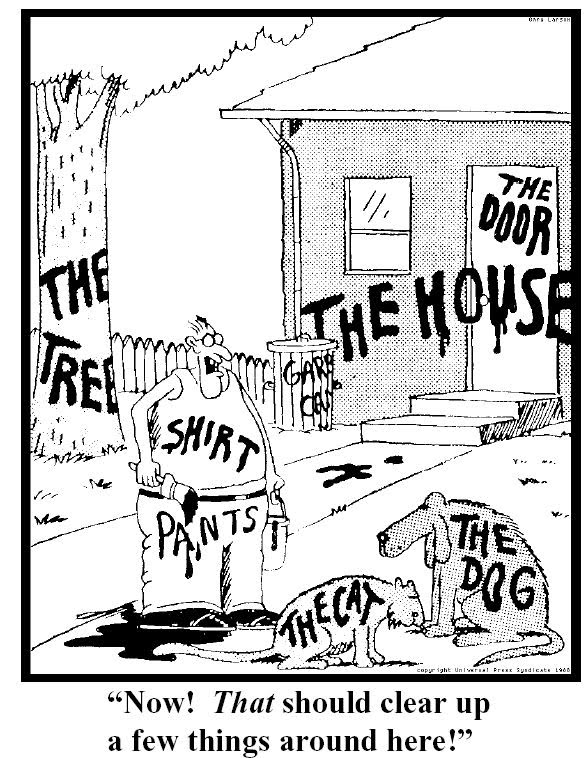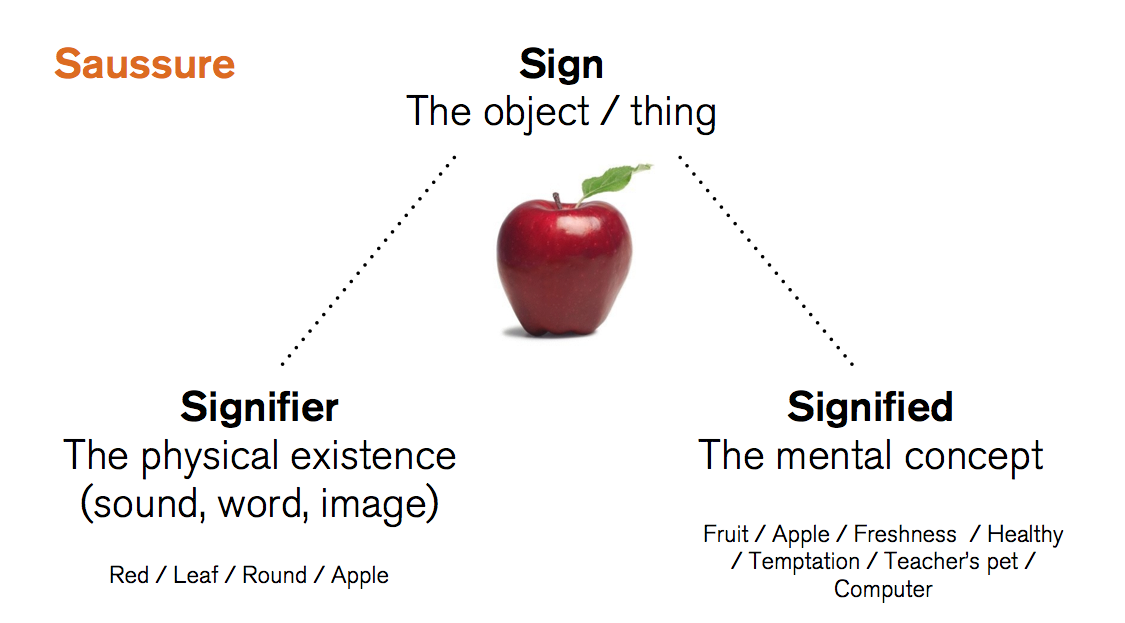What does this ad tell you? (source of image)
What is the relationship between signs and marketing communications? Why do certain symbols and icons work more effectively as advertisements in reaching consumers than others?
A brand of cultural anthropology which looks at the use of signs and symbols as a means of communicating and conveying meaning, semiotics is a vital discipline in the science of marketing communications, advertising and branding.
Defining Semiotics
According to Dictionary.com, there are two inter-related definitions of what semiotics mean, namely:
- The study of signs and symbols as elements of communicative behavior. This also includes the analysis of the systems of communication, as language, gestures, or clothing.
- A general theory of signs and symbolism, usually divided into the branches of pragmatics, semantics, and syntactics.
According to Swiss linguist and semiotician Ferdinand de Saussure, there are two main parts to any sign:
- Signifier: This connotes any material thing that is signified, be it an object, words on a page, or an image.
- Signified: The concept which the signifier refers to. This would be the meaning that is drawn by the receiver of the sign.
The example below shows how this can be understood.
Courtesy of Aron Harvey
To understand what pragmatics, semantics and syntactics mean, let us dive deeper into Wikipedia. From there we have three definitions:
- Semantics: Relations between signs and the things to which they refer to. It focuses on the relationship between signifiers, like words, phrases, signs, and symbols, and what they stand for; ie their denotations. For example, young can mean a colt, filly, piglet, baby, puppy or kitten.
- Syntactics: Relations among signs in formal structures. An example is the arrangement of words and phrases to create well-formed sentences in a language (eg grammar).
- Pragmatics: Relationship between signs and the effects they have on the people who use them based on their context, pre-existing knowledge, inferred intent, and other factors.
Check out these slides to learn more about semiotics.
Semiotics in marketing communications
In marketing communications and advertising, semiotics play a key role in determining the success or failure of any endeavour.
Through the effective deployment of verbal, visual and performative (ie actions by the consumer) elements, companies can strengthen their reach to their customers. These symbolic elements include logos, rituals, cultural symbols, colours, iconic individuals, text, advertisements, websites, physical environments, hospitality and service, tag lines and other “touch points”.
A great example of effective use of semiotics is found in the use of metaphors. These commonly understood concepts tend to resonate easily with your target audiences. For example, “a glass half full” is perceived as a sign of optimism and positiveness.
Have a look at this advertisement (example courtesy of Cher Taylor).
You can see that the signifier is the represented by a public bus as well as a woman holding on to hand rails that are shaped like hands. There are also words – “WHOSE HAND ARE YOU HOLDING?” – which adds to the signifier.
What is signified to you? Perhaps the feeling that it can be dirty, unhygienic and full of germs.
For this ad, a strong message is effectively communicated without the use of much words.
What about this second ad below? What are the signifiers and what is being signified?
Semiotics – the science of holistic brand communications
To take semiotics one step further, it is useful to consider how this works as a tool for more effective brand communication.
In this well-written article by Laura Oswald of Marketing Semiotics Inc, she explains the following:
“Semiotic theories and methods can be used to identify trends in popular culture, understand how consumer attitudes and behavior are formed in relation to popular culture, including brands, and how marketing and advertising programmes can best meet the needs of consumers by improving communication with the end user.”
The article goes on to explain that semiotics involves the “collection and analysis of data drawn from communication of all kinds – artistic or everyday, in all kinds of media including verbal, visual, and olfactory” and is useful for “clarifying brand equities in the brand audit, then tracking the implementation of these equities across all elements of the marketing mix.”
Semiotics involves studying cultural trends, language, non-verbal cues, behavioural norms, social etiquette, and rituals. It also includes understanding how the various sensory and emotional stimuli of a brand interact with each other or influences its targeted recipient.
What this tells us is that implementing a consistent brand communications programme alone isn’t enough. Rather, one should adopt a more holistic approach which involves studying the unique context of where the communications takes place.
By doing so, we can better predict and control how consumers would respond to a brand given their current socio-cultural contexts.
Implementing semiotics in marketing
The next time you consider rolling out a fancy brand name, logo, renovated shop front or new product feature, think about what your total package of signs and symbols mean to your consumers before doing so.
Ask yourself the following questions:
- Is there synergy between what you’re trying to convey and what your staff are saying at the shops?
- How does culture influence the way different shapes, colours, and words are perceived?
- Are the different symbols and signs used in your communications coherent and synergistic?
- Have you considered how deep metaphors could influence the way your content is perceived?
- Do you foresee any clashes in meaning between what you seek to project, and what your audience may perceive?
- Can customers associate your visual, auditory, olfactory and tactile stimuli with your product or service?
- Are you giving the wrong impression with that bright fluorescent pink packaging that you’re investing in? Or that drab gray colour used for your logo?
Sending the wrong signals can be extremely detrimental to your brand. It also negates whatever intent you may have.
By embracing the tenets of semiotic analysis, our chances of making a real impact on our consumer’s lives – and our bottomlines – may improve significantly.
Doing so also helps us to avoid the unfortunate gaffes which may sometimes arise from a poor understanding of how consumers perceive and react to different stimuli.

Of course one needn’t be too explicit with signs… (source of image)





You’ve used infographics to clarify the concept of semiotics in marketing, and you’ve also shared an informative article on the topic.
I found myself captivated by the depth of research and the clarity with which you presented the information. Your writing style is not only engaging but also accessible, making complex concepts easy to understand. It’s evident that you put a significant amount of effort into crafting such a valuable piece